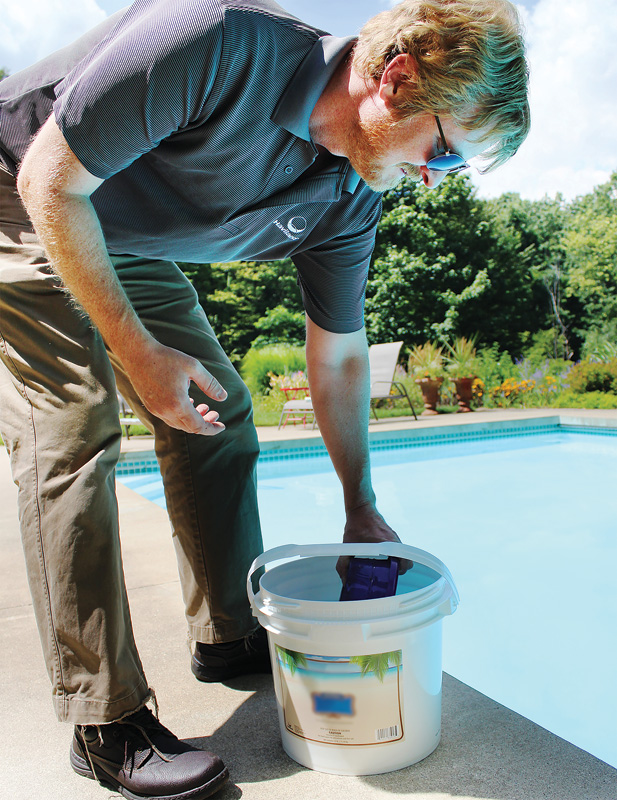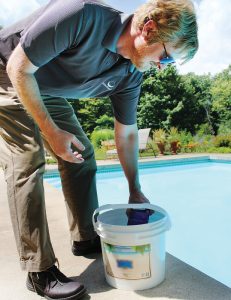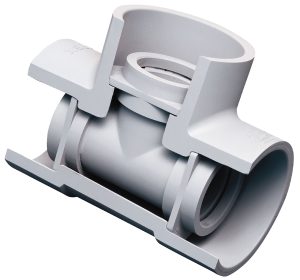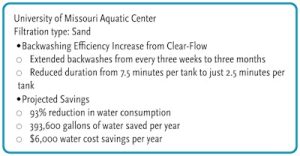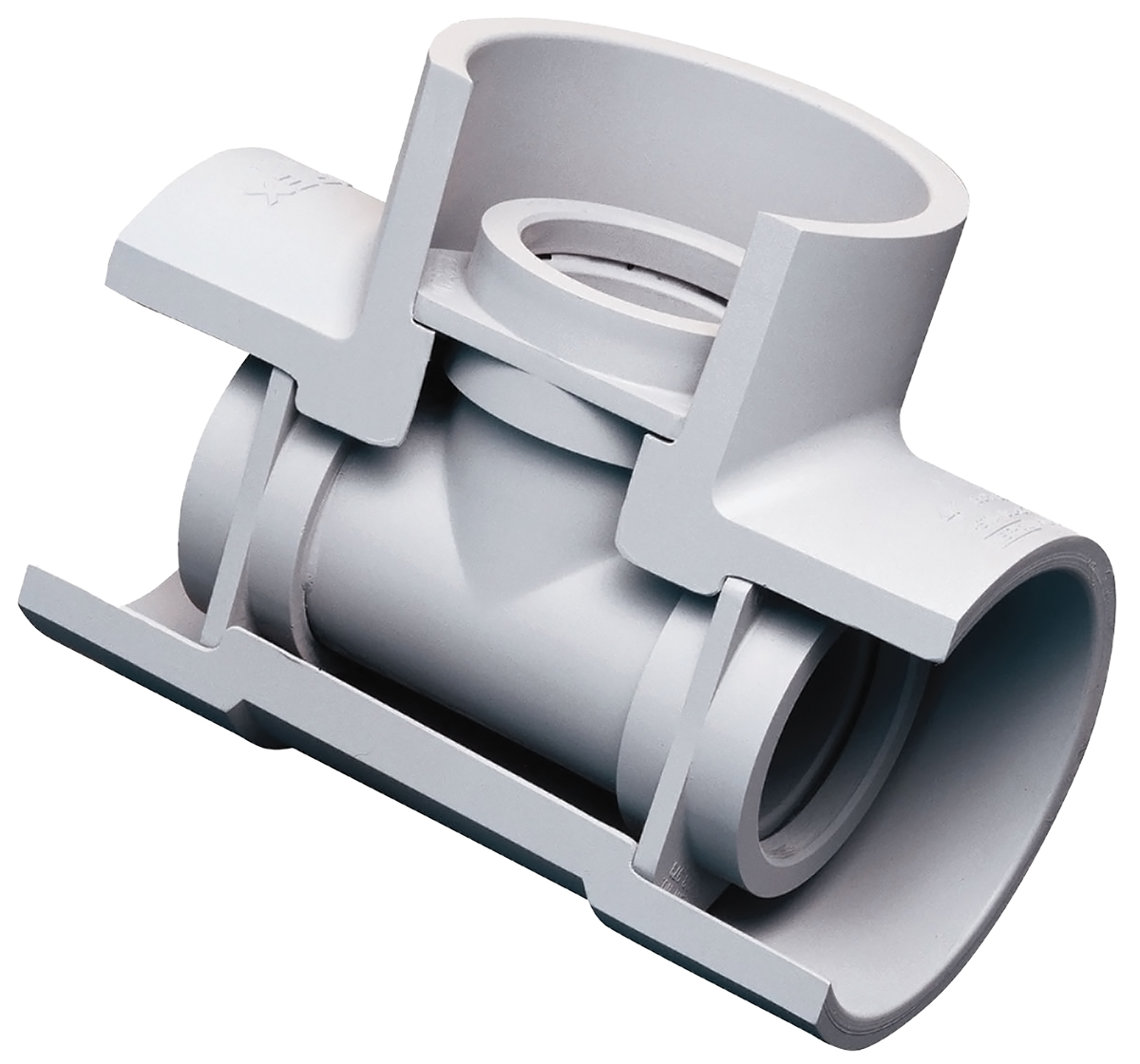By John Bereza
During the offseason, pool owners in many areas get a much-needed break from the demands of maintaining their pools. Unfortunately, this time can also lead to neglect, creating problems when the new season starts. Pool professionals understand that while some pools receive regular care, many others suffer due to inconsistent testing, lack of thorough cleaning, and insufficient attention. Closing this gap is vital for the pool and spa industry to keep customers happy with their investments.
The pool and spa industry aims to keep customers happy with their pools and hot tubs. New automation systems, esthetic enhancements, and entertainment features have dominated industry tradeshows. However, with many new and often inexperienced pool and hot tub owners entering the market, professionals need reliable tools to maintain clean, clear, and sanitized water. Many pool professionals recognize borates as essential for maintaining better water balance, improving clarity and comfort, and optimizing sanitizer efficiency—often with significant cost savings.
Why borates?
Borates are crucial in supporting pools equipped with electrolytic chlorine generators (ECGs) or saltwater chlorinators by addressing specific challenges unique to these systems. They help stabilize pH levels, minimize corrosion, and enhance chlorine efficiency. Beyond ECGs, borates are advantageous for all pools and spas, making them indispensable for maintaining clean, clear, and inviting water.
Borates improve water quality and user comfort in addition to their functional advantages. They (EPA-registered borate products) inhibit algae growth, reduce the frequency of chemical adjustments, and enhance the water’s appearance. Their ability to stabilize pH and prevent common issues makes them a valuable resource for pool professionals and homeowners.
Many pool professionals consider borates a game-changing addition to pool care, not only for their effectiveness but also because they provide cost savings over time. By improving water balance and reducing the need for additional chemicals, borates simplify maintenance for service technicians and homeowners alike.
The role of borates in ECGs
Galvanic corrosion
One of the primary reasons borates have gained popularity among pool service professionals is their ability to reduce the impact of galvanic corrosion. ECG systems require large amounts of sodium chloride (salt) to establish about 3,000 to 5,000 parts per million (ppm) concentrations. These salt levels significantly contribute to total dissolved solids (TDS) in the water, increasing the risk of galvanic corrosion.
In a high-TDS environment, dissimilar metals—such as stainless steel and copper—can experience galvanic corrosion even when not in direct contact. This electrochemical reaction releases metal ions into the water, leading to staining, discoloration, and damage to pool components. Borates mitigate this risk by stabilizing pH levels and reducing conditions exacerbating corrosion.
Galvanic corrosion is not always apparent. It can cause less noticeable problems like water discolouration and mineral deposits, which are often difficult to address without targeting the underlying issue. Adding borates to the maintenance routine offers pool professionals a proactive way to minimize these risks.
The Borate Breakdown
For vinyl liners
- Extends liner lifespan by maintaining stable pH levels
- Reduces chlorine demand and frequency of algae treatments
- Softens water naturally for enhanced comfort
For fibreglass pools
- Protects surfaces from damage caused by chemical imbalances
- Acts as a safety net to prevent long-term wear
For plaster pools
- Softens water’s aggressive nature during new surface curing
- Protects aging plaster from scaling and etching over time
For electrolytic chlorine generators (ECGs) pools
- Mitigates surface wear caused by ECG systems
- Combines automated sanitation with enhanced water balance
and surface protection
pH control and pH creep
ECGs produce chlorine in the form of sodium hypochlorite; however, they also continuously produce sodium hydroxide (NaOH), which has a pH of approximately 13. This means the pool water’s pH increases steadily—called “pH creep.” High pH levels can lead to surface staining, cloudy water, and scale formation when unmanaged.
Borates act as an effective buffer, stabilizing pH levels to prevent sharp increases and ensuring chlorine remains efficient. This stabilization minimizes the need for frequent acid adjustments, simplifying maintenance tasks for service professionals, especially during high-demand periods.
Beyond pH control, borates enhance chlorine performance by maintaining an ideal pH range. This improves sanitizer efficiency, reduces chlorine consumption, and decreases the overall chemical demand of the pool.
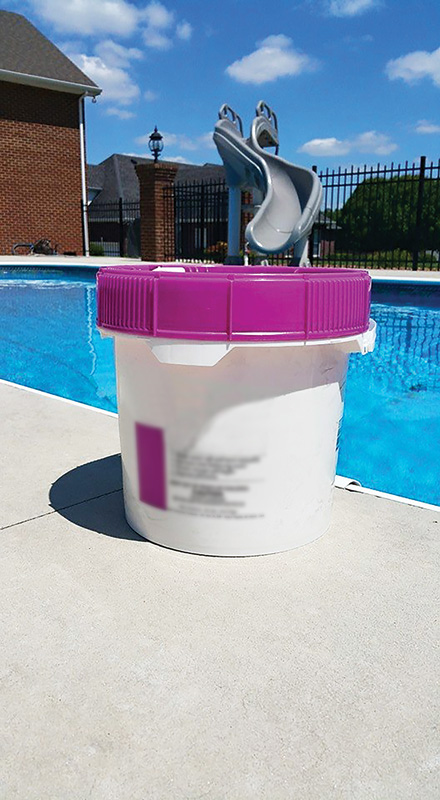
Corrosion prevention
The electrolysis in an ECG can damage metal components such as handrails and light niches. Borates add an anti-corrosion effect, protecting these components and extending their lifespan. Many pool professionals agree borates are a valuable companion product to ECGs, simplifying maintenance and protecting equipment.
Borates also prevent the release of metal ions that contribute to water discoloration and staining. By addressing these issues at the chemical level, borates reduce the need for corrective treatments and improve the pool’s overall appearance.
Scale formation
High calcium content in pool water can lead to scale formation and cloudy water. Borates prevent calcium and carbonates from crystallizing on pool surfaces and equipment, reducing scale buildup. This extends the lifespan of salt cells and minimizes the need for harsh acid cleaning.
By maintaining borate levels at 30 to 50 ppm, service technicians have reported salt cells lasting up to a decade—nearly double the lifespan of cells in non-borate-treated pools. Additionally, the scale that does form in borate-treated pools is softer and easier to remove, reducing maintenance time and effort.
Application and maintenance
Borate products are easy to use and come in powders, granules, and slurries. They can be added to any pool or spa, regardless of the sanitizer used, and at any time of year. Applying borates is as simple as broadcasting the material across the pool’s surface and brushing undissolved particles to ensure proper distribution. A small pH or alkalinity adjustment is typically required but can be mitigated by lowering both to the lower end of the recommended levels before borate application. Reapplication is minimized since borates are only lost through drag-out, splash-out, or non-evaporation water loss. A typical borate concentration loss of 10 per cent is to be expected for a typical six-month season.
It is essential to avoid adding borates through a skimmer, as this can cause clumping and clogged plumbing, particularly in colder water temperatures. Splitting the dosage into smaller applications can help prevent significant pH and alkalinity spikes. Seasonal testing ensures that borate levels remain within the recommended range of 30 to 50 ppm, providing consistent benefits throughout the season.
Borates are also an ideal addition during winterization. Their long-lasting properties ensure that pool water remains stable and balanced during inactivity. This simplifies the opening process and helps prevent common issues like algae growth and staining.
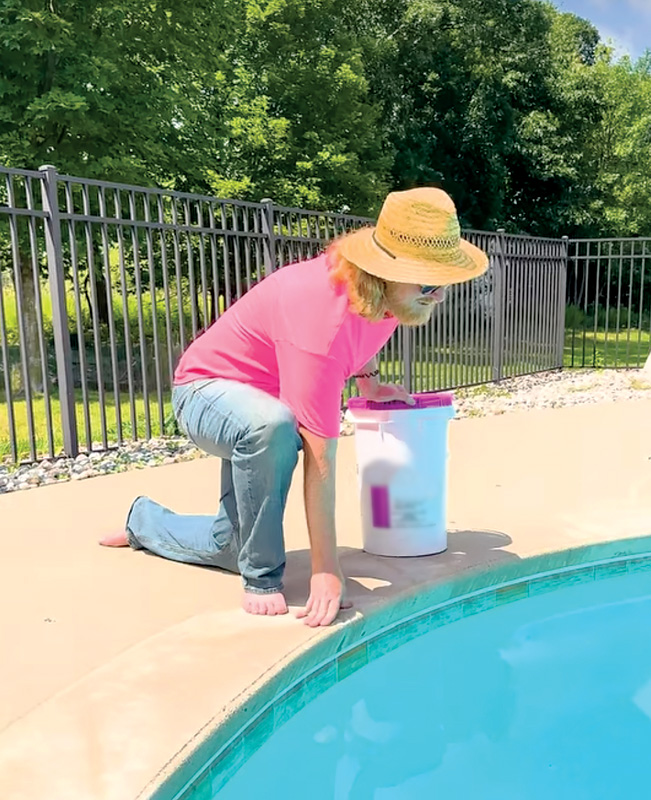
Cost efficiency
The initial cost of borates is comparable to a season’s supply of chlorine tabs, but the long-term savings are substantial. Pools treated with borates use 25 to 50 per cent less chlorine and fewer water-balancing chemicals, algaecides, and stain preventatives. Since borates are not consumed during the pool season but only lost through water loss, the typical re-application is around 10 per cent of the initial dose.
Reducing chemical usage saves money and simplifies pool care for professionals and homeowners. Additionally, the enhanced lifespan of equipment—such as salt cells and metal components—further underscores the value of borates as an investment in long-term pool health.
Homeowners also appreciate the reduced need for frequent chemical adjustments and the improved clarity and feel of borate-treated water. These benefits make borates an attractive option for those seeking a high-quality pool experience with minimal effort.

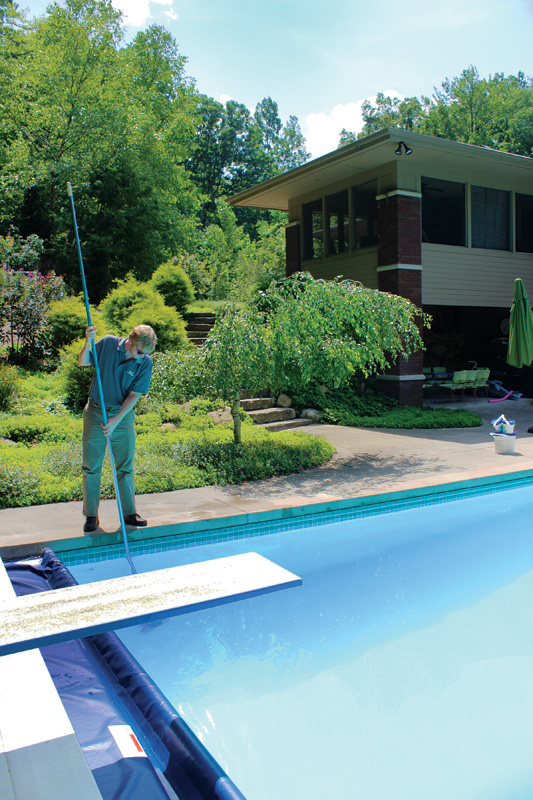
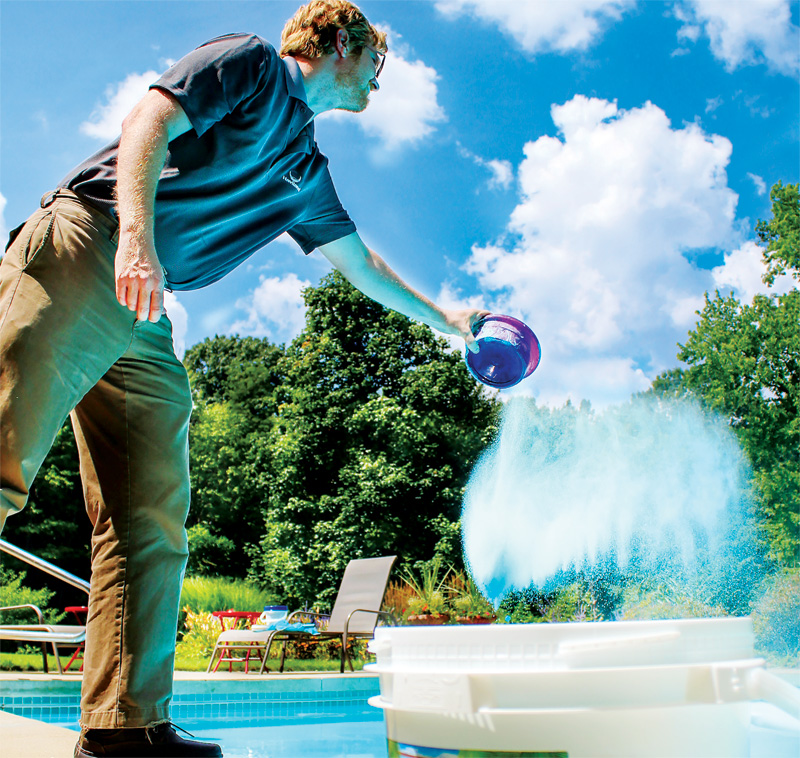
Specific pool and spa types
Plaster pool start-ups
Plaster pool start-ups require critical water conditions to protect delicate surfaces during curing. Borates guard against pH swings and scaling, reducing the likelihood of etching or damage to new plaster. Builders also benefit from fewer return trips to adjust water chemistry.
Borates are particularly beneficial during the initial curing phase, where water chemistry fluctuations are most likely to occur. Their ability to stabilize pH and prevent scale formation ensures a smoother transition to long-term maintenance.
Vinyl liner protection
Unbalanced pool water can weaken vinyl liners over time, leading to premature breakdown. Borates stabilize pH levels and reduce harmful swings, extending the lifespan of vinyl materials and preserving their structural integrity.
Borates protect the liner and enhance the water’s feel, reducing swimmers’ irritation and creating a more enjoyable pool environment.
Fibreglass pool surfaces
Fibreglass pools are particularly susceptible to staining and potential gel-coat failure caused by imbalanced water chemistry. Borates prevent these issues by maintaining stable pH levels and enhancing the pool’s esthetic appeal. This ensures the swimming pool’s fibreglass surface remains smooth and sparkling.
Borates’ anti-scaling properties also reduce maintenance requirements, allowing fibreglass pool owners to enjoy their pools more and less time addressing water chemistry issues.
A perfect match for hot tubs
Similar to ECG pools, hot tubs experience continuous pH increases due to jets causing carbon dioxide (CO2) outgassing. Borates buffer this pH trend, maintaining water balance and reducing the frequency of adjustments. Additionally, borates soften the water, improving user comfort by minimizing skin dryness and eye irritation.
Borates also prevent foam formation, a common issue in hot tubs. This added benefit contributes to a cleaner and more enjoyable spa experience.
Additional benefits of borates
EPA-registered borates inhibit algae reproduction, providing a significant advantage during spring pollen season and summer’s high temperatures. Pools treated with borates are less likely to turn green, even under challenging conditions.
Beyond functionality, borates enhance the water’s refractive index, creating a sparkling effect that adds visual appeal. This esthetic improvement, combined with the softer, smoother feel of borate-treated water, enhances the overall experience for pool and spa users.
Borates also reduce eye irritation and skin dryness, making them a preferred choice for swimmers with sensitive skin. Their soothing properties improve overall comfort, further increasing customer satisfaction.
Conclusion: Cleaner, clearer, and easier maintenance
Borates are a versatile tool for ensuring water quality in pools and hot tubs. They simplify maintenance, protect equipment, enhance aesthetics, and improve the bather experience. By incorporating borates into maintenance programs, professionals can help customers enjoy cleaner, clearer, and easier-to-maintain water for years to come.
Author
John Bereza is the Great Lakes regional sales manager for Haviland Pool and Spa Products, a manufacturer of water treatment products in Grand Rapids, Mich. He works to promote the company’s pool and spa/hot tub product lines to its network of national distributors and dealers. Bereza has worked at Haviland since 2003 in various roles, including decorative coatings technical support and marketing, and, since 2020, has been in the current sales role with a primary focus on technical training. He can be reached via email at [email protected].
The post Better balance with borates: Keeping water cleaner, clearer, and easier to maintain appeared first on Pool & Spa Marketing.

